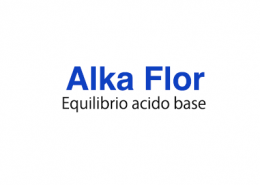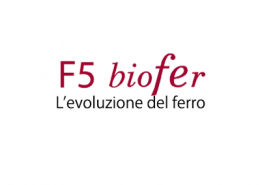Estromin è utile in menopausa perchè contiene il The verde fitosomato che nella fattispecie serve a inibire le Aromatasi così come lo Zinco.
L’aromatasi o citocromo P450-19A è l’enzima che interviene nella trasformazione dell’androstenedione in estrone e del testosterone in 17-β-estradiolo. Nella donna in età fertile la maggior parte degli estrogeni viene prodotta dalle ovaie ma una quota viene prodotta dalla trasformazione adoperata da questi enzimi dagli androgeni presenti negli alimenti e nel grasso corporeo. Mentre nella donna in menopausa rappresenta la fonte maggiore endogena di produzione di estrogeni. Spesso nelle donne con tumore al seno se sono già in menopausa danno come trattamento post operatorio dei farmaci inibitori delle aromatasi.
Il The verde aiuta sia a perder peso per azione antiinfiammatoria che come termogenetico e sia come inibitore naturale delle aromatasi.
Tra gli inibitori naturali delle aromatasi vi è lo Zinco e il The Verde oltre a numerosi flavonoidi (quercetina, apigenina, narigenina, resveratrolo ecc) Il The verde presenta inoltre numerosi vantaggi aggiuntivi, sia come antiossidante, come antiinfiammatorio e come dimagrante.
Modulation of aromatase activity by diet polyphenolic compoundsMonteiro R1, Azevedo I, Calhau C.
Author information
Abstract
Estrogens are involved in physiological actions related to reproduction, body fat distribution, and maintenance of bone mass and are also related to the pathogenesis of estrogen-dependent cancers. The aim of this work was to study the effect of polyphenols on estrogen synthesis. The effect of polyphenols and polyphenolic-rich beverages on aromatase activity was tested in JAR cells (a choriocarcinoma cell line) through the tritiated water release assay. Some of the tested polyphenols inhibited estrogen production, chrysin being the most potent. Additionally, we observed that red wine, alcohol-free red wine,green tea, and black tea (200 microL/mL) significantly decreased aromatase activity. No effect on aromatase expression, as assessed by western blotting and RT-PCR, has been detected after 24 h of treatment with any of the flavonoids under study. In conclusion, polyphenols are able to modulate aromatase activity and, consequently, estrogen synthesis. The knowledge of such interference may help to clarify some of the biological properties attributed to polyphenols and may be useful in prevention/treatment of estrogen-dependent disorders.
J Nutr. 2009 Feb;139(2):310-6. doi: 10.3945/jn.108.098699. Epub 2008 Dec 11
The anti-obesity effects of green tea in human intervention and basic molecular studies
Huang J1, Wang Y1, Xie Z1, Zhou Y1, Zhang Y1, Wan X1.
Author information
Abstract
Many researchers have reported that obesity is a major risk factor for diabetes, cardiovascular diseases, several forms of cancer (such as breast, colon and prostate), pulmonary, osteoarticular and metabolic diseases in the past decades. Recently, the hypolipidemic and anti-obesity effects of green tea in animals and humans have slowly become a hot topic in nutritional and food science research. This review will up-date the information of the anti-obesity effects of green tea in human intervention and animal studies. During recent years, an increasing number of clinical trials have confirmed the beneficial effects of greentea on obesity. However, the optimal dose has not yet been established owing to the very different results from studies with a similar design, which may be caused by differences in the extent of obesity, dietary intake, physical activity intensity, the strength of subjects’ compliance to test instruction, the genetic background of populations, body composition and dietary habits. Therefore, further investigations on a larger scale and with longer periods of observation and tighter controls are needed to define optimal doses in subjects with varying degrees of metabolic risk factors and to determine differences in beneficial effects among diverse populations. Moreover, data from laboratory studies have shown that green tea has important roles in fat metabolism by reducing food intake, interrupting lipid emulsification and absorption, suppressing adipogenesis and lipid synthesis and increasing energy expenditure via thermogenesis, fat oxidation and fecal lipid excretion. However, the exact molecular mechanisms remain elusive.
ZINCO E AROMATASE
AbstractSend to:
Cancer Res. 2001 Feb 15;61(4):1338-46.
Down-regulation of promoter 1.3 activity of the human aromatase gene in breast tissue by zinc-finger protein, snail (SnaH).
Okubo T1, Truong TK, Yu B, Itoh T, Zhao J, Grube B, Zhou D, Chen S.
Author information
Abstract
Aromatase (estrogen synthetase) is expressed in breast cancer tissue, and in situ expression of the enzyme stimulates breast cancer growth. Promoter I.3 is one of the major promoters that control the expression of aromatase in breast cancer tissue. Using the yeast one-hybrid approach to screen a human breast tissue hybrid cDNA expression library, we found that the zinc-finger transcriptional factor Snail (SnaH) interacted with a regulatory region near promoter I.3 of the human aromatase gene. DNA mobility shift assays and mutation analyses using recombinant SnaH protein expressed in Escherichia coli have revealed that this protein interacts with a segment, 5′-CTGATGAAGT-3′, which is between 66 and 76 bp upstream from the transcriptional start site of promoter I.3. Using mammalian cell transfection experiments, SnaH was found to act as a repressor of promoter I.3 activity. Site-directed mutagenesis experiments have revealed that the NH2-terminal SNAG domain is important for the repressor activity of SnaH. To demonstrate the inhibitory activity against aromatase expression, a stable SnaH-expressing MDA-MB-231 breast cancer cell line was generated, and the aromatase RNA messages in the SnaH-transfected cell line were found to be 30% of those in the vector-transfected cell line. Reverse transcription-PCR analysis on RNAs isolated from 12 cell lines has confirmed that SnaH is expressed at a higher level in normal breast epithelial cell and stromal fibroblast cell lines than in breast cancer cell lines. In addition, SnaH mRNA was detected in only 16 of 55 breast cancer specimens. On the other hand, aromatase mRNA was detected in 54 of the 55 specimens. Our results indicate that SnaH acts as a repressor that down-regulates the expression of aromatase in normal breast tissue by suppressing the function of promoter I.3. A reduction of the expression of SnaH in breast cancer tissue further suggests a cancer-protective role for this protein in normal breast tissue.
PMID: 11245431 [PubMed – indexed for MEDLINE] Free full text
Un altra sostanza di Estromin utile per la menoausa ed alcuni dei sui sintomi è Vitex Agnus Castus che tra le varie azioni, inibizione di prolattina, aumento della dopamina, stimolazione delle endorfine ha anche azione nel ridurre le vampate di calore in menopausa e nel migliorare la steatosi epatica non alcolica della menopausa e le dislipidemie, colesterolo e trigliceridi in eccesso.
Vitex agnus-castus L. (Verbenaceae) Improves the Liver Lipid Metabolism and Redox State of Ovariectomized Rats
Moreno FN1, Campos-Shimada LB1, da Costa SC2, Garcia RF3, Cecchini AL4, Natali MR5, Vitoriano Ade S1, Ishii-Iwamoto EL1,Salgueiro-Pagadigorria CL3.
Author information
Abstract
Vitex agnus-castus (VAC) is a plant that has recently been used to treat the symptoms of menopause, by its actions on the central nervous system. However, little is known about its actions on disturbances in lipid metabolism and nonalcoholic fat liver disease (NAFLD), frequently associated with menopause. Ovariectomized (OVX) rats exhibit increased adiposity and NAFLD 13 weeks after ovary removal and were used as animal models of estrogen deficiency. The rats were treated with crude extract (CE) and a butanolic fraction of VAC (ButF) and displayed the beneficial effects of a reduction in the adiposity index and a complete reversion of NAFLD. NAFLD reversion was accompanied by a general improvement in the liver redox status. The activities of some antioxidant enzymes were restored and the mitochondrial hydrogen peroxide production was significantly reduced in animals treated with CE and the ButF. It can be concluded that the CE and ButF from Vitex agnus-castus were effective in preventing NAFLD and oxidative stress, which are frequent causes of abnormal liver functions in the postmenopausal period
Vitex agnus-castus (Chaste-Tree/Berry) in the treatment of menopause-related complaints.
. van Die MD1, Burger HG, Teede HJ, Bone KM.
Author information
Abstract
BACKGROUND:
The origin of the current practice of administering Vitex agnus-castus in menopause-related complaints is uncertain, but appears to be relatively recent. Here we review the evidence for this application of Vitex based on evidence from pharmacological studies and clinical research.
METHODS:
The mechanisms of potential relevance in the context of menopause are explored with reference to the current understanding of the endocrinology and neuroendocrinology of menopause and associated symptoms.
CONCLUSIONS:
We conclude that, while evidence from rigorous randomized controlled trials is lacking for the individual herb in this context, emerging pharmacological evidence supports a role for V. agnus-castus in the alleviation of menopausal symptoms and suggests that further investigation may be appropriate.
Rimane comunque il concetto che bisogna cambiare alimentazione e stile di vita, ricordo che solo il 25% delle donne giapponesi in menopausa ha vampate di calore, il 18% delle donne Cinesi e solo il 14% delle donne di Singapore, loro non mangiano formaggi e mangiano soia e fitoestrogeni da legumi (e non usano integratori) in Europa il 70-80% delle donne in menopausa le ha, se il problema persiste nonostante il cambio di stile di vita o se si vuole accelerare il processo di miglioramento dei sintomi, allora ha senso prendere gli integratori come Estromin, Cimicifuga, Magnesio ecc. (vedi post precedente), gli integratori non hanno l’efficacia di una corretta alimentazione, sono dei validi aiuti ma non sostituiscono la cosa più efficace cioè corretta alimentazione e gestione dello stress.






